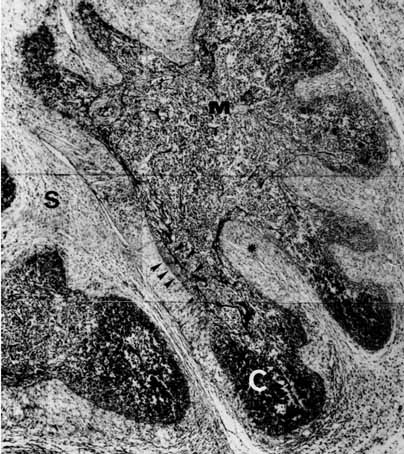
|
Congenital syphilis. Mounting of
photomicrography showing reduction of the cortex (C),
septal enlargement (S) with intralobular projetions (*).
there is also basement membrane thickening and increase
in reticular fibers inside the lobule (arrow heads),
Paraffin section, Gomori's reticulin, 200x.
|
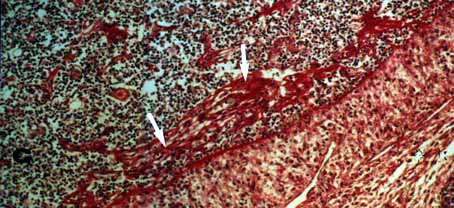 |
Congenital syphilis. Mounting of photomicrography
showing lobular basement membrane thickening and
intralobular "fibrosis" (arrows). Septa exibts
intense plasmocitary infiltrate. Picrosirius not
polarized, 100x. |
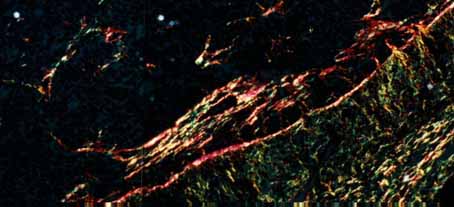 |
Congenital syphilis. Mounting of photomicrography
showing lobular basement membrane thickening and
intralobular "fibrosis", characterized by
abundant type I collagen (arrows). Septa exibts intense
plasmocitary infiltrate, area with predominance of type
III collagen near basement membrane (perpendicular
fibers) and an area away from basement membrane
characteristic of type I collagen, also containig type
III collagen. Picrosirius, polarized, 100 x. |
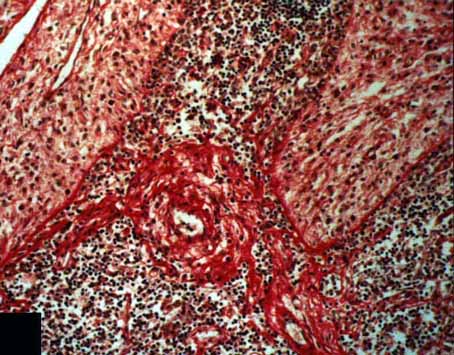 |
Congenital syphilis. Perivascular fibrosis and septa
projections, associated with cortical lymphocyte
depletion.Picrosirius, not polarized, 100 x. |
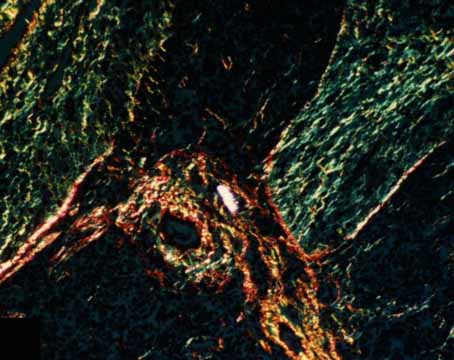 |
Congenital syphilis. Perivascular fibrosis containig
type I collagen, basement membrane thickening and septa
projections, associated with cortical lymphocyte
depletion.Picrosirius, polarized, 100 x. |